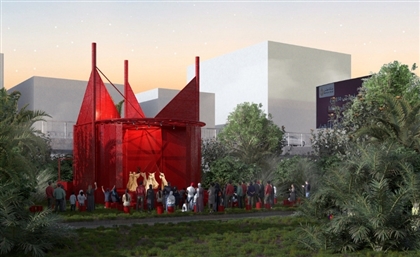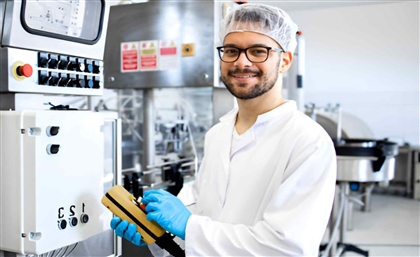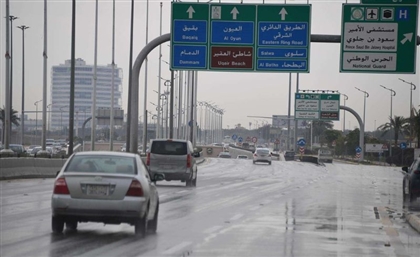How Egypt’s Blue Tricycle Was Transformed Into a Community Care Car
Egyptian architects from CLUSTER—Cairo Lab for Urban Studies—designed & built a Community Care Vehicle for Ard El Lewa.
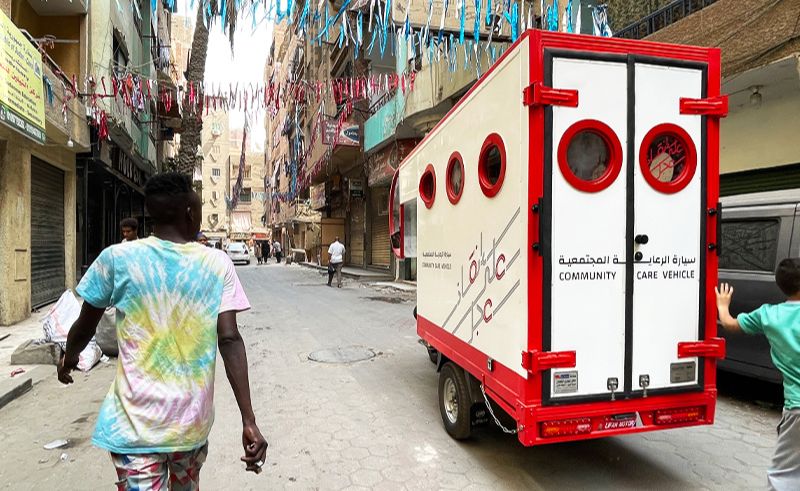
Originally Published September 30th, 2024
In the heart of Ard El Lewa, one of Cairo’s densely populated, deemed “informal” areas, an intriguing initiative has emerged: a tricycle transformed into a mini ambulance. This innovative contraption was created by a group of Egyptian architects from CLUSTER—Cairo Lab for Urban Studies—dedicated to finding alternative ways to engage with our cities.
“Our practice doesn't follow traditional architectural design. We take pride in being designers who prioritise creativity and socially responsible ideas.” architect and urban planner Omar Nagati, Principal and co-founder of CLUSTER told CairoScene.
Transcending the perceived conventional role of architects, CLUSTER has nurtured its path to improve the quality of our cities’ built environment by making urban spaces more inclusive and just. Founded by the Egyptian architect and urban planner Omar Nagati in 2011, they’ve adopted a clear methodology of action research and in-depth mapping to enable themselves to propose ideas and generate alternative unorthodox modes of urban development.
If you want to actively engage in the city you need to find a place for yourself within the ecosystem, open doors for ideas” architect and urban planner Omar Nagati, Principal and co-founder of CLUSTER told CairoScene.
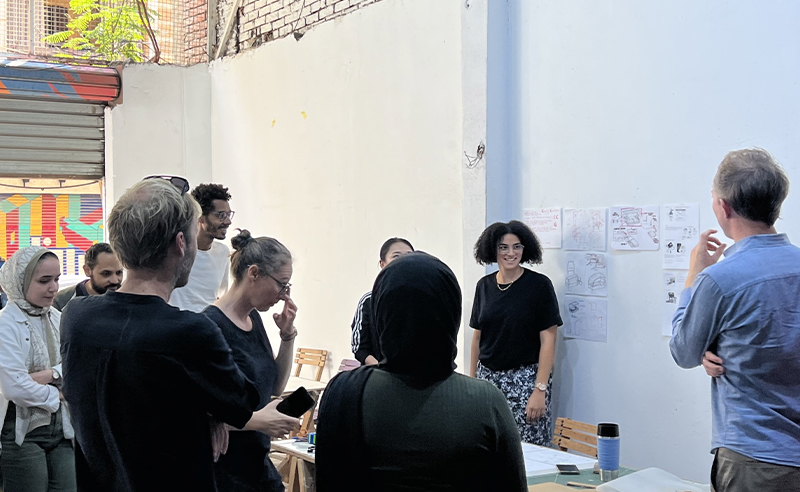
In a path where design and creativity converge, the CLUSTER team headed by architects Omar Khaled and Hanaa Gad collaborated with AP+E Netherlands-based architectural office and the Dutch Studio René Boer under the support of Creative Industries Fund to bring their latest project: Community Care Vehicle to being.
“This project builds on our long-term interest and concern with regards to what we call ‘self-built’ environment or ‘informal’ areas, promoting a sustainable urban environment and a more diverse and accessible public space.” Omar Nagati explained.
Taking notice of the tricycle as an omnipresent vehicle or transportation mode, these iconic blue vehicles, now seen on every corner of our Cairene street and all over Egypt, have diversified in their uses due to their compact size, allowing them to easily navigate our narrow streets. Already employed for transportation, trash collection, and merchandise transport, the question becomes why not readapt them for more critical urgent needs or missing services.
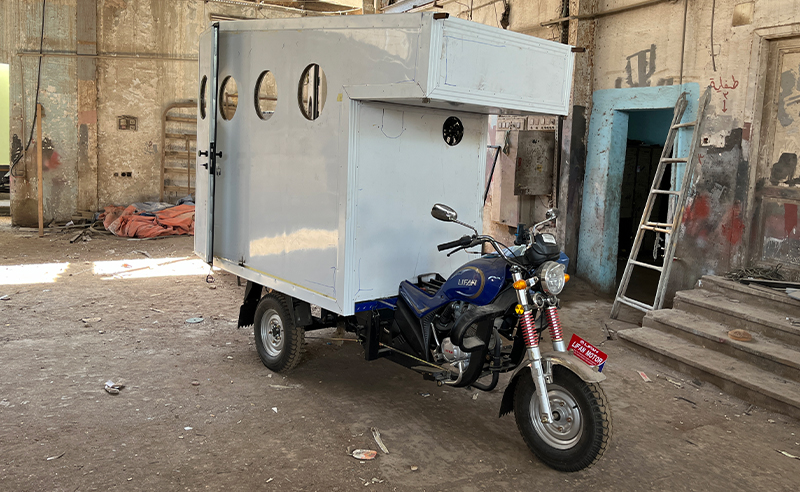
This seemingly minor observation sparked the driving force behind CLUSTER’s initiative. After thorough research, and analysis of both the site and the tricycleycle’s tricycle’s various adaptations, a clear vision emerged with two potential options: either an emergency fire vehicle or a Community Care Vehicle.
The support of volunteer students from the German University in Cairo and a student from Cambridge University, added another facet of civic engagement to the initiative.
The team opted to craft a life-size wooden model of the design, using their local creative and maker space lab ALFABRIKA in Ard El Lewa, while keeping the final choice of vehicle use open for now. This action was further enriched by an extra facet of civic engagement, with the support of volunteering students from the German University in Cairo and a student from Cambridge University.
ALFABRIKA Creative Lab was established in 2019 with the aim of facilitating an exchange of knowledge between formally trained design/art students with local craftspeople/manufacturers as an extension of CLUSTER’s interests in creative industries.
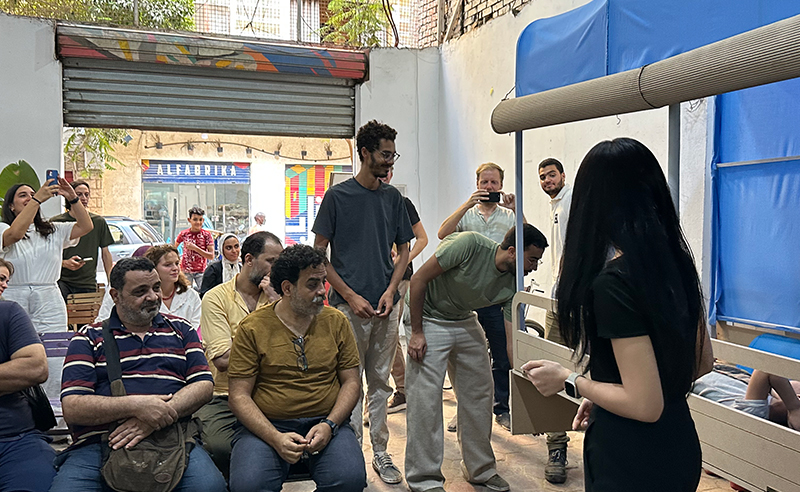
Using their signature communal engagement and participatory approach, CLUSTER organised a meeting with the local community of Ard El Lewa. From community leaders to curious children and families, everyone joined forces to explore the dynamic model. Together, they debated: would their needs call for a ‘mini-ambulance’ or an emergency fire vehicle?
Ultimately, the voices of the community determined the choice of the Community Care Vehicle, aka “Rescue on Wheels”, mainly for its versatility. “Rescue on Wheels” will not only transport the sick or unwell; it is designed to carry individuals in wheelchairs and serve as a vital tool for spreading awareness about health issues and supporting vaccination campaigns.
According to CLUSTER, this is a new venture where their creative interdisciplinary approach has taken them into unfamiliar uncharted ‘more auto mechanical’ territories. Employing all sorts of available local knowledge to build this moving machine, is one of the key aspects and challenges of this project.
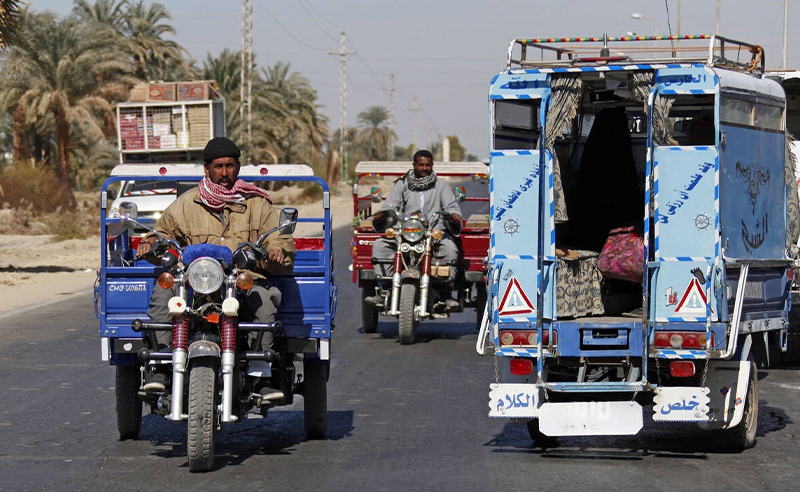
"The local market holds all the knowledge; we just need to piece it together. Everyone contributed their part, and while some were sceptical, they pushed through anyway. Sometimes, you have to push the boundaries a bit to achieve what truly matters."
The team sought technical expertise from various fields to meet ambulance standards. They needed to accommodate a stretcher, two seats for a paramedic and companion, and two oxygen tubes, which required expanding the tricycle and shifting its centre of gravity. They consulted automotive engineering professors from Ain Shams University and collaborated with Al-Tahan, a company that typically manufactures fridge cabinets, to create an insulated cabinet for the vehicle, which now adds an "ambulance" cabinet to their portfolio.
All the internal furniture was cleverly designed to fold away, making room for various uses. The entire cabinet was elevated to house a sliding ramp underneath, allowing a wheelchair to roll smoothly inside. To ensure safety, extra metal studs were added to the ramp—an idea inspired by local, hands-on solutions—to prevent any accidental rollbacks onto the street.
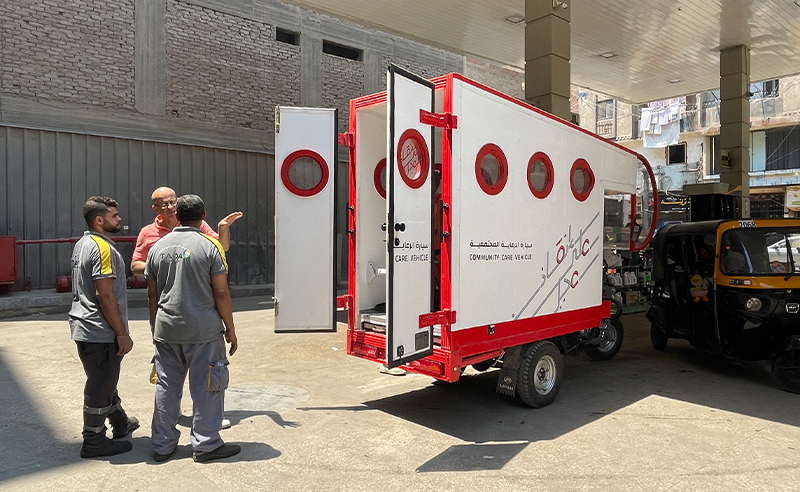
“Rescue on Wheels” showcases a striking white and red visual identity that subtly reflects its site and function. With an overarching theme of three—drawing inspiration from the tricycle’s three wheels—it features three circular windows on each side, reminiscent of traditional architectural styles. When opened, these windows subtly resemble a crescent, evocative of the Egyptian red crescent.
“The design was not an afterthought; it was crafted to establish a visual identity that resonates deeply, offering a true sense of pride and dignity to the community of Ard El Lewa.” Omar Khaled, CLUSTER team lead designer explained.

The cabinet ventilation system primarily relies on eight windows and a hood installed at the back of the driver. While this is sufficient for the current ‘Beta Version,’ an AC system may be considered in the future. For now, it was intentionally avoided, along with any electrical appliances, to prevent interference with the tricycle's motor.
At the moment, “Rescue on Wheels” has only been launched locally in Ard El Lewa and is navigating its way through the complex web of city regulations. Set to be showcased at the upcoming World Urban Forum from November 4th to 8th, 2024, this project highlights the true potential of architecture when it collaborates with society, fostering live dialogue, research, and the integration of diverse possibilities.
Photography Credit: CLUSTER
- Previous Article UAE to Develop Spacecraft to Study the Asteroid Belt
- Next Article Six Unexpected Natural Wonders to Explore in Egypt








